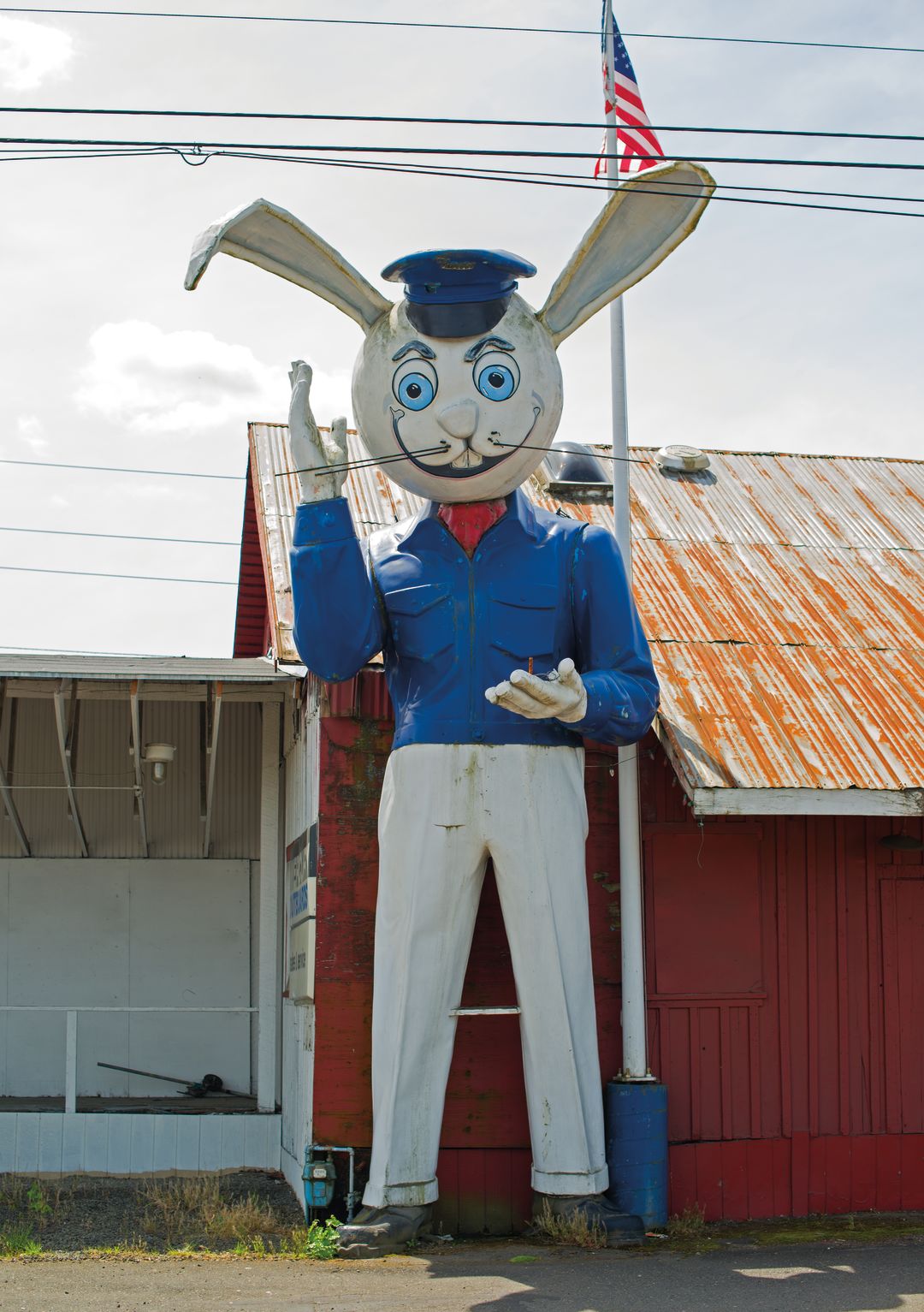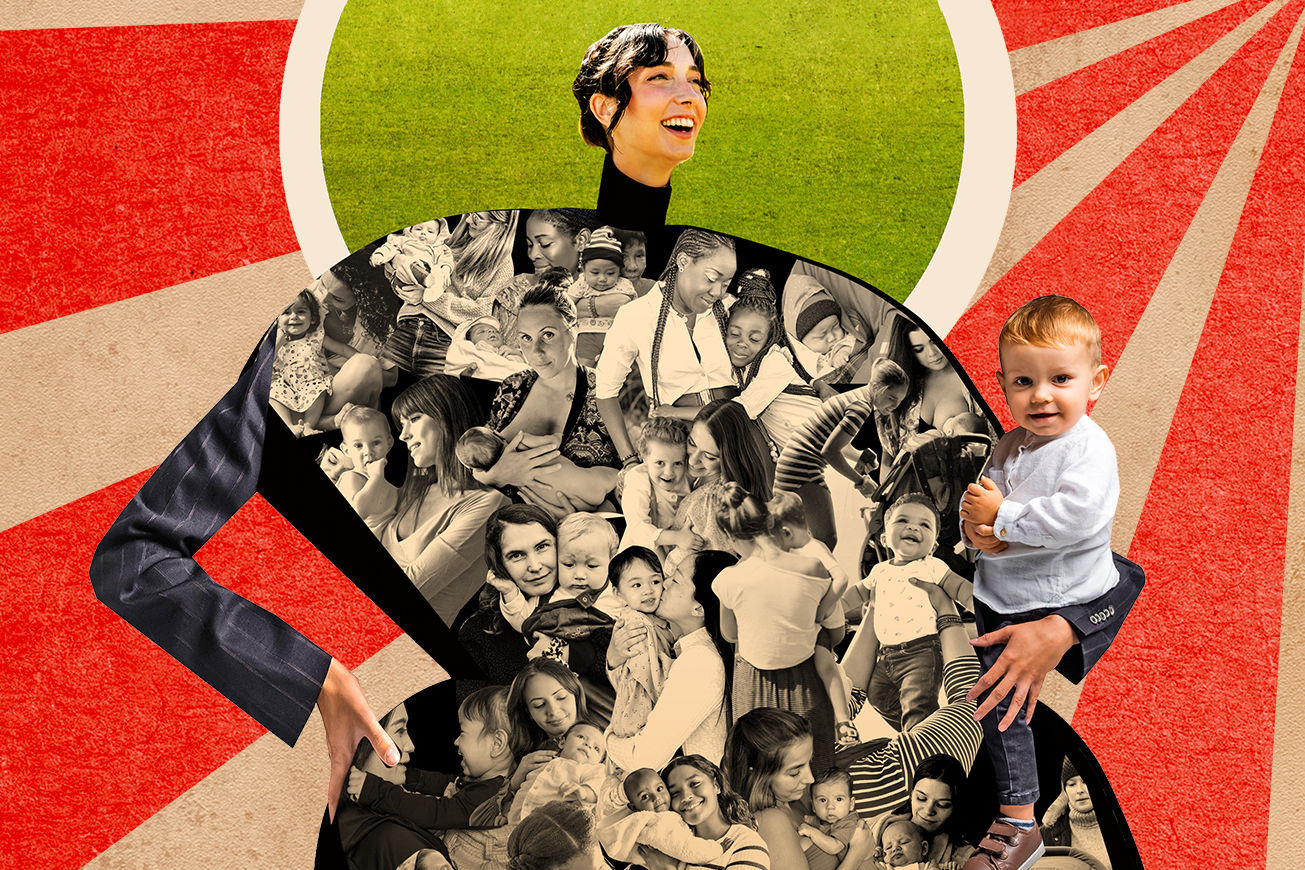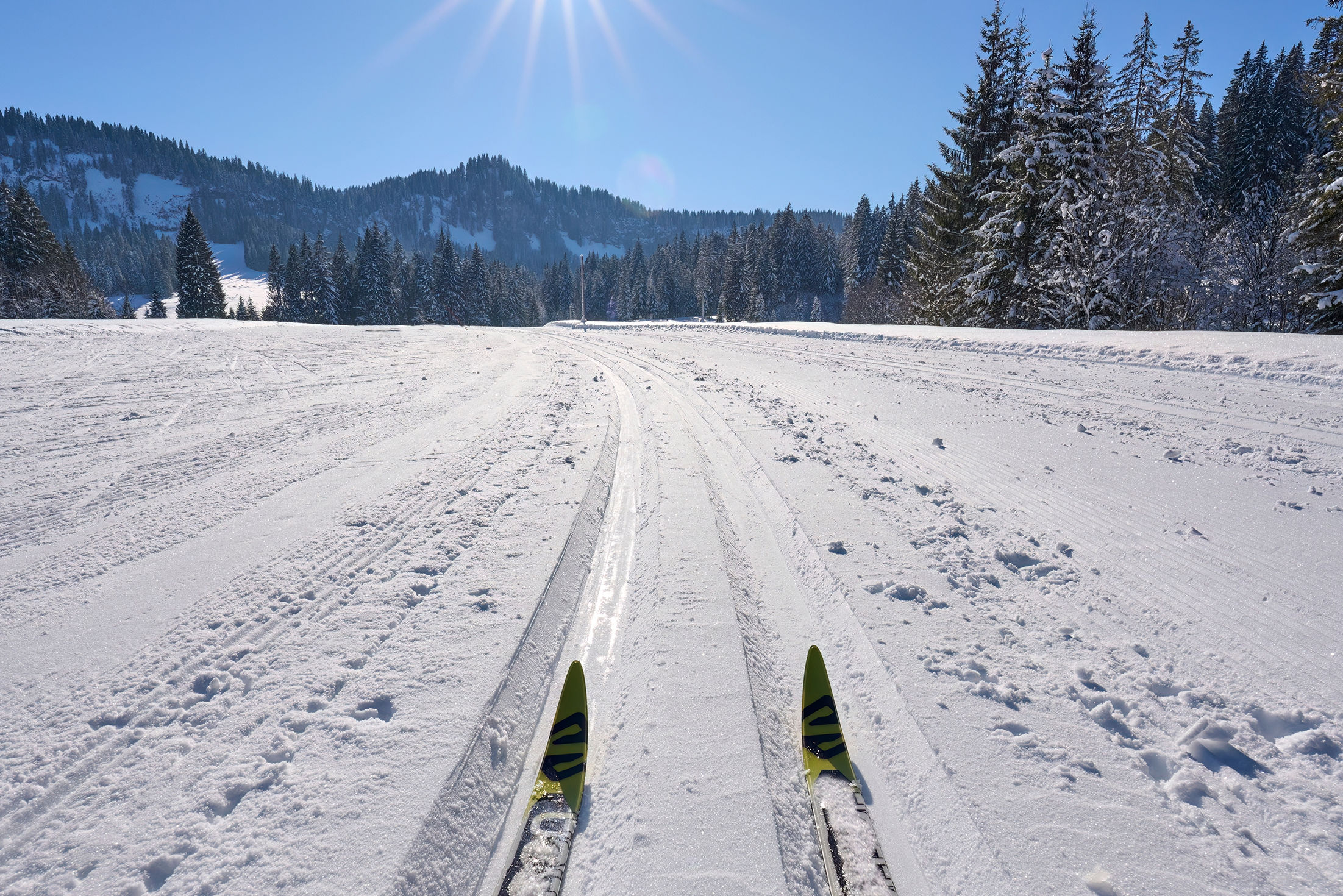Can This Giant Suburban Bunny Statue Survive?

Image: Erica J. Mitchell
The blue-eyed rabbit on two legs has smiled and waved from the edge of Tualatin Valley Highway for nearly five decades. He wears dockside casual: a captain’s hat, navy jacket, freshly ironed white slacks. The massive bunny’s whiskers—two on the right, just one on the left—stand out stick-straight from his face, as if he’s just coughed down a stiff cartoon cocktail. People call him Harvey, for Harvey Marine, the business that popped a fiberglass rabbit head onto a retired Texaco Big Friend statue and parked him here in the early 1970s. At the time, this move made a more immediately accessible cultural reference: Harvey was a 1950 Jimmy Stewart movie in which the main character’s best friend was an invisible six-foot rabbit named Harvey—a rabbit that kept him from being “just a normal human being.”
Here in Aloha, Oregon, Harvey stands, his right hand slanted as if to say “howdy, friend.” On holidays Harvey is known to grasp a pumpkin or a Christmas tree. But the rest of the year, when his hands are empty, Harvey takes on a classic Jesus pose with his left hand (paw?) near his heart: perhaps the savior of the Tualatin Valley Highway, an unwavering symbol of imagination and whimsy along this blacktop stretch of strip malls and construction signs.
This particular part of the suburbs was a place of pleasure and pain for young, bespectacled me. I was 11 when I saw FernGully: The Last Rainforest at the Aloha Theater, a mile and a half east of Harvey. The film taught me that humans are terrible and love to destroy everything beautiful—foreshadowing, because now the historic Aloha Theater is closed, replaced by a pawn shop with signs that scream WE BUY GOLD! Two miles west of Harvey, I laced up orange-wheeled roller skates at Skate World, where my gangly limbs and enormous braces helped relegate me to the snack counter during couples’ skate. The rink, shuttered in the summer of 2014, is now a pod of storage units.
Like many burb-raised kids, I pledged allegiance to the city (and the conviction that suburbs suck) as soon as I could. In my 20s, I lived for a while in a North Portland house with rats inside the pipes, where reckless kids once sprayed bullets into my yard. When my mother insisted the suburbs weren’t that bad, I scoffed.
I was never going back.
To be honest, I was really just coming to grips with the fact that several childhood-defining Aloha institutions had died, because I had recently done what I swore I would never do: I moved to the suburbs.
Not because I have kids who must have bike access to some mythical Leave It to Beaver cul-de-sac, or anything like that. It’s just that I’m now a 34-year-old working writer, and my husband is an artist, and we’re no longer willing to live inside a shoebox just because it’s in a Portland zip code. When we moved, I was excited to show my husband these places that meant so much to me as a kid. The skating rink. The theater. Harvey.
I know change is life’s only constant. But that knowledge didn’t stanch the tears as I passed the shuttered theater and the leveled skating rink and faced the reality that Aloha, Oregon, is not a place of imagination and wonder. It never was. It is a place of struggle: of people making ends meet, of moms with kids waiting for the bus in the rain, of cheap housing. Most people in this part of the southwest metro area don’t have college educations. It is a pocket of strip malls between other pockets of strip malls, a place with no government of its own. Without Harvey—its strange and surreal roadside landmark—in fact, it’s barely a place.
I had called the owner of Harvey Marine, but he was definitively not interested in an interview. So I walked across the street to VanPelt Healthcare, where Tina VanPelt said she hadn’t heard anything official about Harvey Marine going out of business. She says several times a week she sees people posing for pictures with Harvey. It’s a landmark she depends on, telling her customers that “the rabbit looks into my parking lot.”
I later talked to Eric Squires, who shares my concern for Harvey. He runs the Aloha Historical Society and has been called the “mayor” of the noncity of Aloha. He says Harvey defines this place. “The Aloha-Reedville area is frankly absolutely nothing,” he says. “The irony is that Harvey the Rabbit is this repurposed gas station icon that symbolizes nothing in a tall, big way. He’s become iconic and culturally significant.”
Just behind the rabbit, past the railroad tracks that flank the boat store, lies a big, beautiful 1,400-acre green field, a remnant of this area’s deep agricultural roots. That, Squires says, is the future site of “South Hillsboro”: a development that could reportedly bring 8,000 homes and 20,000 new residents to this area.
“The value of the dirt under Harvey is pretty immense,” Squires notes. Soon, though, I see an Oregonian article in which the owners of Harvey Marine say they have no plans to sell.
I hope that’s true.
Harvey lends dimension to an otherwise forgettable place. The strange statue doesn’t tell a story. It is the story of Aloha—one that is different from Hillsboro’s or Beaverton’s: an amorphous, in-between place people grow up in and leave behind.
And, it turns out, a place where people sometimes find their way back, if for nothing more than a glimpse of the big fiberglass rabbit, a sign that life can sometimes offer weird delights that signify nothing at all and yet end up meaning everything.




